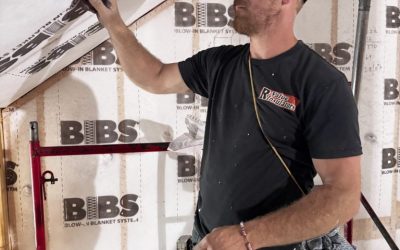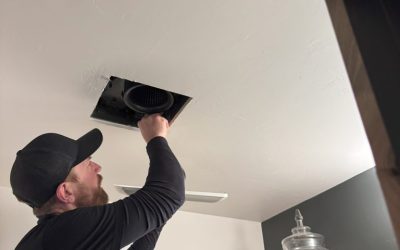Back in the day, homes were generally ventilated naturally — you threw open a window or opened the front door to allow fresh air to replenish a home’s stale indoor air, taking with it smells, dust, and moisture. However, older homes are also drafty, leaky, and not at all energy-efficient.
Today, there is a greater focus on building homes that are “tighter.” Of course, from an energy efficiency standpoint, airtight, high-performing homes are better. But tight homes especially need ventilation and homes that have designed, mechanical ventilation are more durable, comfortable and energy efficient.
Ventilation is important for a number of reasons; reducing moisture in the home, preventing the formation of mold, and reducing toxic gasses, leading to an overall healthier, cleaner indoor environment.
In today’s blog post, we will cover the subject of proper home ventilation: what are the standards for clean indoor air, why is it important, and how can it be achieved?
Are There Standards for Clean Air in the Home?
There is a standard for clean air within the home as set by the American Society of Heating and Air-Conditioning Engineers (ASHRAE) and known as ASHRAE 62.2.
In essence, ASHRAE 62.2 is a basic ventilation rate formula. It is the accepted method for determining the minimum ventilation rate that a home needs to have in order to have both safe indoor air and remain as energy-efficient as possible.
New homes are built to ASHRAE 62.2 standards (at a minimum), which help ensure homeowners get as much energy efficiency in their new builds as possible without sacrificing indoor air quality or safety.
Why Do Homes Need Ventilation?
According to the EPA, air pollutants can be two to five times more concentrated indoors than out. Since we generally spend up to 90% of our time indoors, it’s vital that we keep this air as clean as possible.
One of the primary reasons why ventilation is so important is that it reduces moisture in the air. Moisture in the home can come from activities like bathing, cooking, and breathing. Moisture itself isn’t harmful, necessarily. However, too much of it can lead to condensation or even mold. Mold is a hazard to both your health and (if it gets bad enough) your home’s structural soundness.
Adequate ventilation is also important to reduce the number of particulates (like dust, pet dander, and pollen) in the home. If you live in a poorly ventilated home that sees a build-up of dust, you might find that hay fever, asthma, and other respiratory symptoms can be exacerbated.
Poor ventilation can also lead to a build-up of gases from cooking, appliances, radon, or fireplaces. It can hinder the circulation of chemicals or volatile organic compounds (VOCs) “off-gassed” from new furniture, paint, and other manufactured items within the home.
In other words, good ventilation is an important part of a safe and comfortable home environment.
What Types of Ventilation Can Homes Have?
There are three main types of ventilation in homes: natural, spot, and whole-house.
Natural ventilation is what we mentioned earlier in the article — it’s the exchange of outdoor air with indoor through open windows, doors, or cracks in the home. It’s certainly helpful and reliable, but, as any Wisconsinite knows, not always comfortable, affordable or energy efficient.
Spot ventilation refers to localized mechanisms in the home that “spot” ventilate areas that need it the most. Generally, these would be bathroom vent fans and range hoods.
Lastly, there are whole-house ventilation systems that are designed to offer controlled, whole-house venting though duct work and fan systems.
How to Increase Ventilation in Your Home
If you think your home isn’t as well-ventilated as it should be, there are ways to remedy this.
First, it can be as simple as opening doors and windows more often or running fans to exchange air. This is especially important while cooking or showering. You can also ensure that your bathrooms are properly equipped with fans that vent to the exterior of your home — not into the attic!
Need More Ventilation Advice?
RVI’s experts would love to talk more about standards of ventilation and indoor air exchange, high-performance home building, and home ventilation systems. RVI also provides ventilation systems to reduce moisture and improve the air quality in your garage.
If you’re in northern Wisconsin, we hope you’ll get in touch with our team of insulation, ventilation, and home performance experts today!



